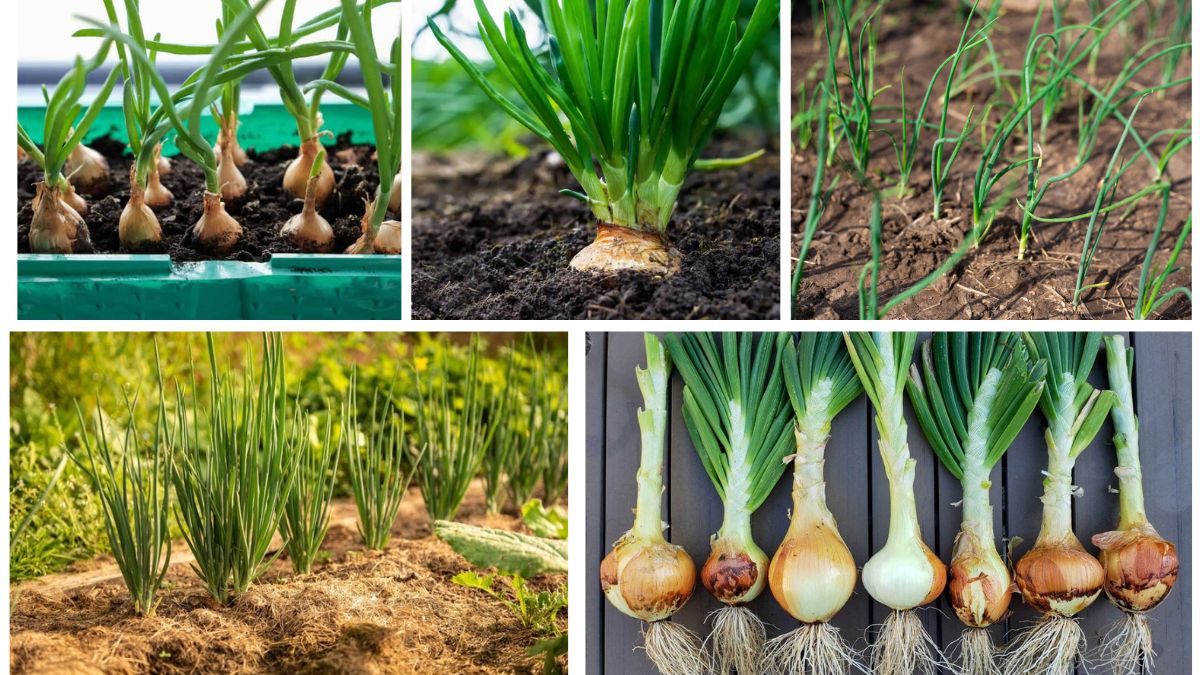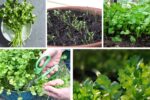Onions are one of the most popular and versatile vegetables grown in home gardens. Whether you want to enjoy them raw in salads, sautéed in dishes, or pickled for storage, onions are a rewarding crop that can be easily grown even by beginners. Planting onions from sets (small, immature onion bulbs) is one of the simplest and most reliable methods for home gardeners to achieve a healthy, bountiful harvest.
This step-by-step guide will walk you through everything you need to know—from preparing the soil and planting to caring for your onions and harvesting them successfully.
Why Plant Onion Sets Instead of Seeds?
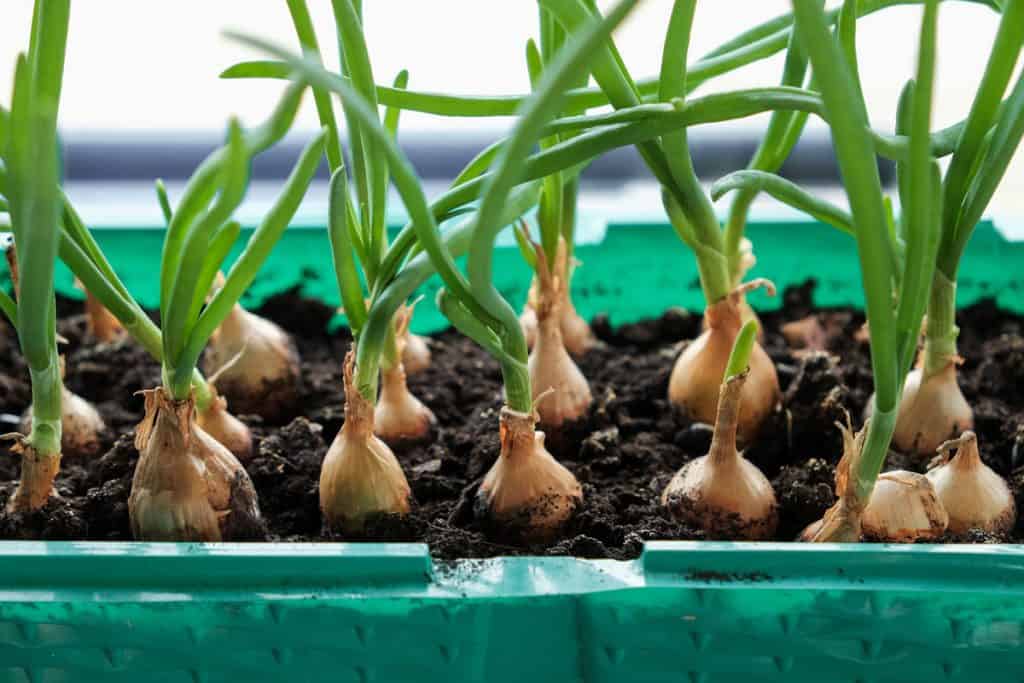
There are two main ways to grow onions: from seeds or from sets. Seeds can take longer to establish, require more care, and may not always result in uniform growth. Onion sets, on the other hand, are small bulbs that have already gone through part of their growing cycle. They offer several advantages:
- Faster growth: Onion sets mature quicker than seeds.
- Less maintenance: They are easier to plant and require less fuss.
- More reliable: Sets are less prone to failure compared to seeds.
- Extended growing season: Since they are already partially developed, they give you a head start on the growing cycle.
This makes onion sets an excellent choice for beginners and gardeners who want quick, dependable results.
Step 1: Choose the Right Onion Variety
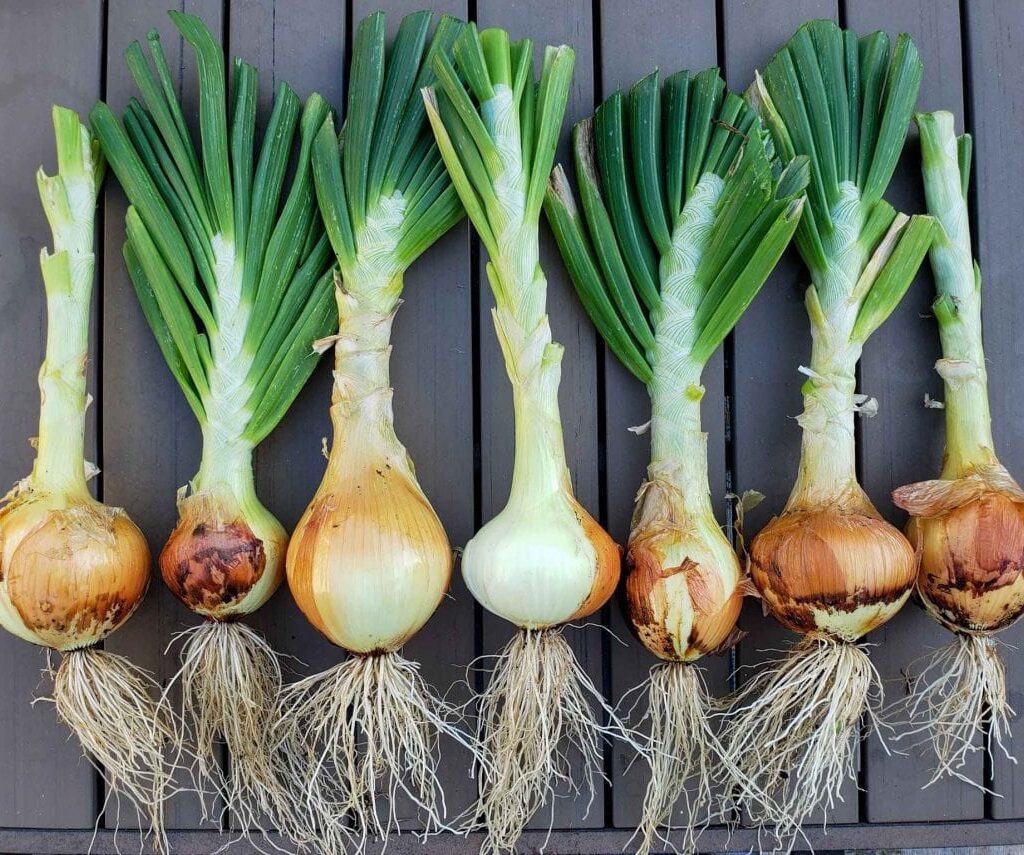
Onions come in many varieties, each with unique flavor, size, and storage properties. When buying onion sets, consider these main types:
- Yellow Onions: The most common, versatile, and excellent for cooking and storing.
- Red Onions: Slightly sweeter with a mild flavor, perfect for salads and grilling.
- White Onions: Sharper in taste, commonly used in salsas and Mexican dishes.
- Sweet Onions (like Vidalia or Walla Walla): Milder and perfect for fresh eating but not as good for long-term storage.
Also, think about your day length requirements:
- Short-day onions: Grow well in southern regions where winter days are mild.
- Long-day onions: Suited for northern regions with longer summer daylight.
- Intermediate-day onions: Thrive in central regions with moderate day length.
Step 2: Prepare the Soil
Onions thrive in loose, well-draining soil that is rich in organic matter. Heavy clay soils can restrict bulb development, while sandy soils may require additional compost to retain moisture.
Soil Preparation Tips:
- pH Level: Onions prefer slightly acidic to neutral soil (pH 6.0–7.0).
- Add compost: Work in plenty of well-rotted compost or aged manure before planting.
- Avoid fresh manure: It can burn young plants and encourage disease.
- Loosen soil: Dig at least 6–8 inches deep to allow the onion bulbs to expand.
Pro Tip: Onions are heavy feeders, so preparing nutrient-rich soil at the start is key to success.
Step 3: Planting Onion Sets
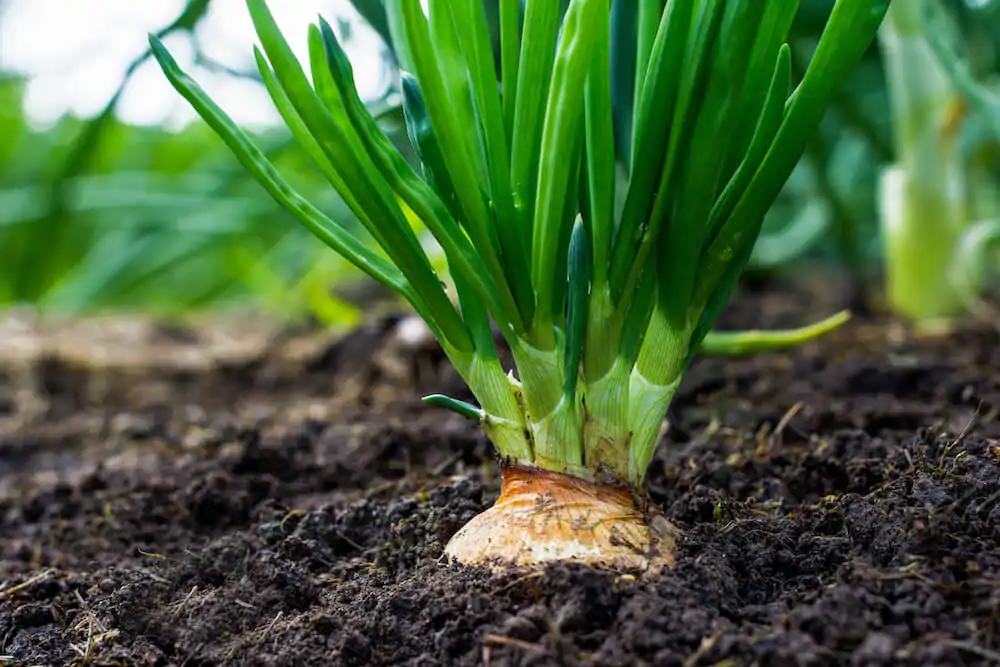
Onion sets should be planted early in the growing season, as soon as the soil is workable. In most regions, this means early spring.
Planting Steps:
- Spacing: Plant sets 4–6 inches apart, with rows about 12–18 inches apart.
- Depth: Push the onion set gently into the soil, pointed end up, about 1 inch deep.
- Firm soil: Cover lightly with soil and press gently to ensure good soil contact.
- Water lightly: Give them a good soak to settle the soil, but avoid waterlogging.
Avoid planting onion sets too deep, as this can stunt bulb development.
Step 4: Watering and Feeding
Onions require consistent moisture, especially during the bulb-forming stage. However, overwatering can lead to rotting.
- Watering: Provide about 1 inch of water per week. Water deeply to encourage strong root systems.
- Mulching: Apply a light mulch of straw or compost around the plants to retain moisture and suppress weeds.
- Fertilization: Onions are heavy feeders. Side-dress with a nitrogen-rich fertilizer every 2–3 weeks until bulbs begin to form. Stop fertilizing when the bulbs start swelling.
Step 5: Weed and Pest Management
Onions don’t compete well with weeds, so keeping the area clear is essential.
- Weeding: Regularly remove weeds by hand or with a hoe, being careful not to damage shallow onion roots.
- Pests: Watch for onion maggots, thrips, and cutworms. Use row covers to protect young plants if pests are common in your area.
- Diseases: Practice crop rotation to avoid onion diseases like downy mildew or onion smut. Avoid planting onions in the same bed year after year.
Step 6: Bulb Development and Care
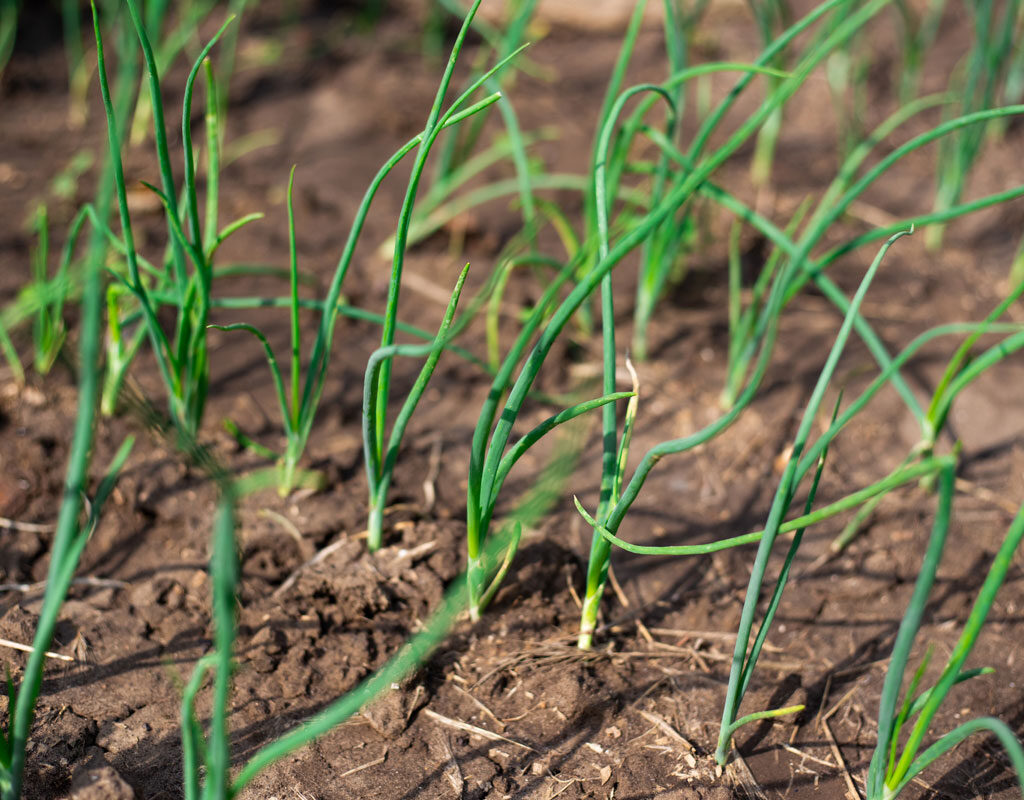
As the onions grow, you’ll notice the green tops getting taller and stronger. Once the day length and growing conditions are right, the bulbs will start swelling.
Key Care Tips During Bulb Formation:
- Ensure consistent watering during this stage.
- Avoid stepping on or compacting soil around the onions.
- Keep weeds away to reduce competition for nutrients.
Step 7: Harvesting Onions
Harvesting onions at the right time ensures maximum flavor and storage potential.
Signs Onions Are Ready to Harvest:
- The green tops begin to yellow and fall over.
- The bulbs are large and firm.
How to Harvest:
- Gently loosen the soil with a garden fork.
- Pull the onions out carefully by the tops.
- Shake off excess soil but don’t wash them yet.
Step 8: Curing and Storing Onions
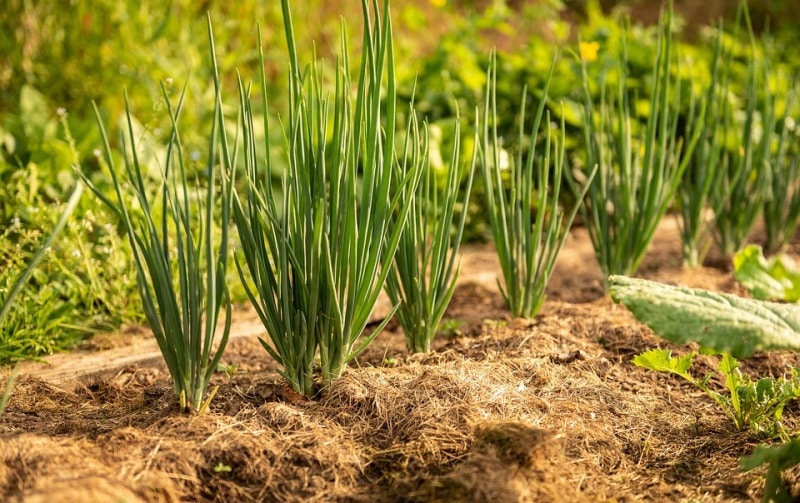
Freshly harvested onions need to be cured before long-term storage.
Curing Process:
- Spread onions out in a dry, well-ventilated area (like a shed, garage, or porch).
- Allow them to cure for 2–3 weeks until the necks are dry and the skins are papery.
- Trim the tops to about 1 inch above the bulb and cut the roots.
Storage Tips:
- Store onions in mesh bags, baskets, or crates.
- Keep them in a cool, dry place (32–40°F is ideal).
- Check regularly and remove any that show signs of rot.
Sweet onions generally store for a few weeks, while storage varieties (like yellow onions) can last for several months.
Common Mistakes to Avoid
- Planting too deep: Leads to poor bulb development.
- Overwatering: Causes rot and fungal diseases.
- Crowding plants: Reduces airflow and limits bulb size.
- Skipping fertilization: Onions need consistent nutrients for big, healthy bulbs.
Conclusion
Growing onions from sets is a simple and rewarding way to enjoy fresh, flavorful onions straight from your garden. By choosing the right variety, preparing the soil properly, and following these step-by-step guidelines, you can boost your chances of success and enjoy a bountiful harvest.
Whether you’re a beginner gardener or someone with years of experience, planting onion sets offers a reliable path to flavorful, homegrown onions that will enhance your meals and make your garden more productive.
